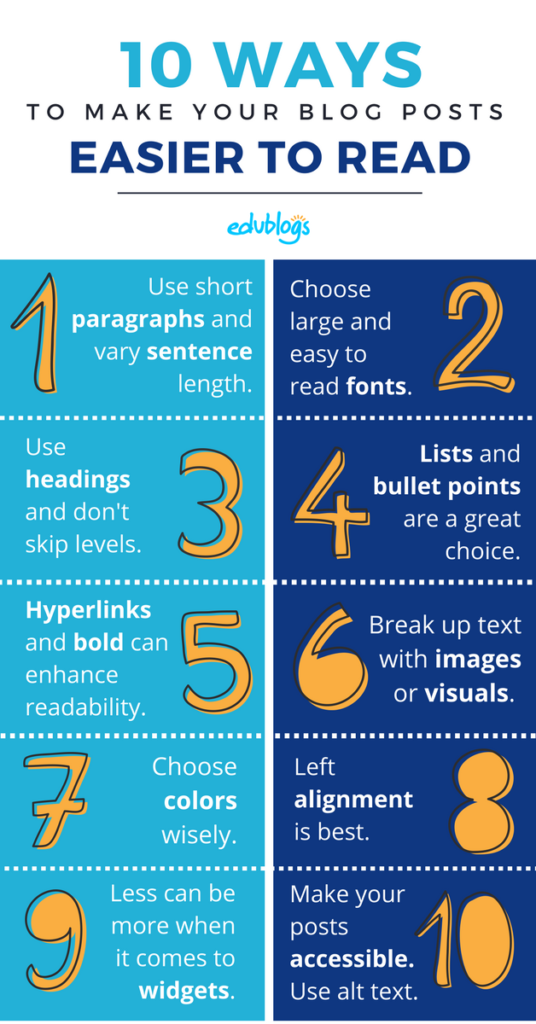Using an Informal Tone in Writing for Blogs: Top Tips

Table of Contents
- What is an Informal Tone in Writing?
- Tips to Craft Engaging Blogs
- Conclusion
- FAQs
While reading something, what do you prefer—a blog with too much jargon, tricky phrases, a boring sentence structure, and only factual information, or a blog with a more conversational tone, where facts are stated in an interesting manner, and even mundane information is conveyed with humor? Most people would prefer going with the latter, which is a perfect example of an informal tone in writing.
Articles and blogs are broadly classified into formal and informal writing styles where the former is primarily used in academia, research, conveying business information, or professional purpose. The latter, the informal tone, is used to convey a general message or opinion, is more conversational, creative, emotional, and personal, and uses the second-person pronouns directly addressing the reader.
What’s an Informal Tone in Writing?
An informal tone in writing is where the writer uses a more casual and conversational approach, ignoring any formality. This writing style is highly recommended for marketers to help them better connect with a general audience. There are no specific rules to informal writing, and this style can integrate a lot of blog writing tones such as surprise, assertiveness, curiosity, optimism, encouragement, information, etc.
Informal writing comprises shorter, to-the-point sentences written in the second person where the author tries to convey their expertise without sounding too boring. The main focus is just to offer quality and convey the message directly without getting into too many technical frivolities.

Tips to Craft Engaging Blogs
Although an informal tone of writing is meant to attract more readers, sometimes, not using the right tone can turn an informal blog post into a boring one that deters the reader. Here are some valuable and insightful tips to keep in mind when writing informal blogs.
- Write as if you are talking to someone: Informal blogs are written in the second person, emphasizing words that directly address the reader, as if the writer is verbally communicating with them.
- Read it aloud: After you finish writing, read the blog to someone, or use Microsoft’s built-in read-aloud feature to understand better where you need to make changes and which sections would appeal the most to a reader.
- Create intrigue: Even if your article intends to sell something or prompt the reader to take action, you must never follow a direct approach. Instead, talk about your audience’s pain points, create a curiosity that encourages them to delve deeper, and then very subtly direct them to the product page.
- Catchy phrases: Informal blogs must have a lot of catchy and conversational phrases, especially in the introduction and conclusion, as readers browse through these first before reading the rest of the blog.
- Shorter sentences without using jargon: A casual tone in an informal blog doesn’t mean that you can use jargon or slang wherever you want. The casual reader won’t understand these, resulting in a decrease in your readership. Also, ensure your sentence are short and to the point, with paragraphs not exceeding 2-3 lines.
- Emotion and empathy: A good blog post must be empathetic towards the reader, solving their pain points while connecting with them emotionally. The use of empathy and emotion helps in explaining more complex thoughts clearly and gives off a personal touch.
- Use of colloquial language: The informal writing style imbibes a conversational tone, which means you must include a bit of slang (although not too much), different figures of speech, aphorisms, everyday abbreviations, and casual phrases.
- A simple structure: Informal blog posts don’t definitely have a particular blog structure. However, while writing, you must be careful about dividing the blog into different, easily navigable, and interpretable sections. This allows the reader to remain engaged throughout or skip to the most interesting sections.

Conclusion
Writing an engaging blog post that prompts the user to take action is not child’s play. You should thoroughly understand your audience’s tastes and preferences, even if you are using the informal tone of Writing. An informal blog is usually short and sweet, reflects the writer’s personal opinion, aims at solving the reader’s pain points through a conversational tone, and engages the reader thoroughly with the right hook. When using an informal tone in writing, don’t forget to check your grammar and spelling, and be sure to exude confidence to establish your authority on the topic you are writing about.

FAQs
To write an engaging blog post, you must start with thorough research to create an outline of your blog. Next, incorporate catchy phrases, engaging questions, or even puns to add a bit of humor so that the reader remains hooked and reads the post till the end. You must not forget to give the reader a suitable call-to-action prompting them to either delve deeper into your offering. Make sure to use naturally flowing, short sentences, casual-everyday lingo, and add relevant images.
Blogs typically use an informal tone in writing since they express the writer’s perspective. However, depending on the topic, some blogs can be based on a formal writing style, depending on the topic.
While writing informal blog posts, you can use a combination of many different types of blogging tones, such as combining humor in a friendly and motivational blog or using optimistic and curiosity-generating tones in parts of your article.
A lifestyle blog, a makeup blog, a food chain, or even an e-commerce store can use an informal tone. In fact, marketers nowadays prefer writing articles and blogs using an informal tone to better connect with their audience and spread the intended message far and wide.
Blogs are primarily based on the writer’s perspective, even including factual information. The informal tone of writing is easier to grasp for all types of readers, also giving writers the advantage of expressing themselves freely.
The most common writing styles are narrative, reflective, personal, comparative, argumentative, analytical, persuasive, and descriptive.
Latest Blogs
Explore how Google’s 2025 AI search updates triggered ranking chaos. Learn actionable strategies to adapt your SEO for AI Overviews, zero-click searches, and SERP volatility. Stay ahead now.
Learn how to rank on AI search engines like ChatGPT, Perplexity, and Gemini by optimizing your content for authority, structure, and relevance. Stay ahead in AI-driven search with this strategic guide.
Explore the best healthcare SEO services for your medical practice. Improve online visibility and effectively reach more patients in need of your services.
Get your hands on the latest news!
Similar Posts

Content Analytics
8 mins read
Google I/O 2025: AI Search Shake-Up & Ranking Volatility

Artificial Intelligence
5 mins read
Top AI Blog Writing Tools for Website Monetization

Blogging
10 mins read